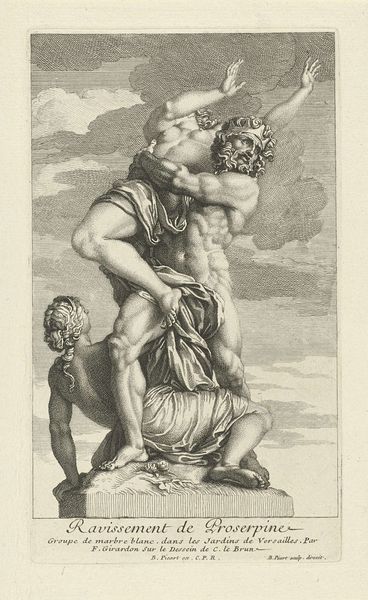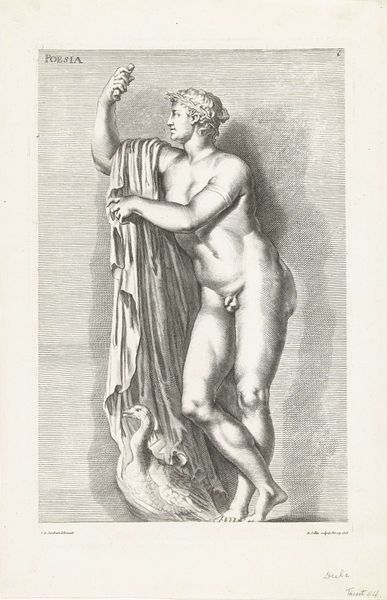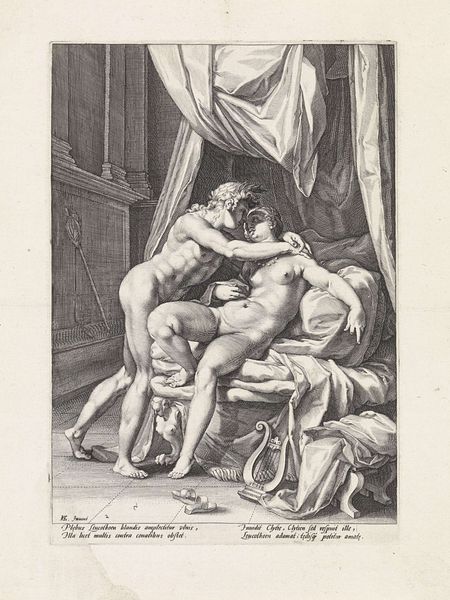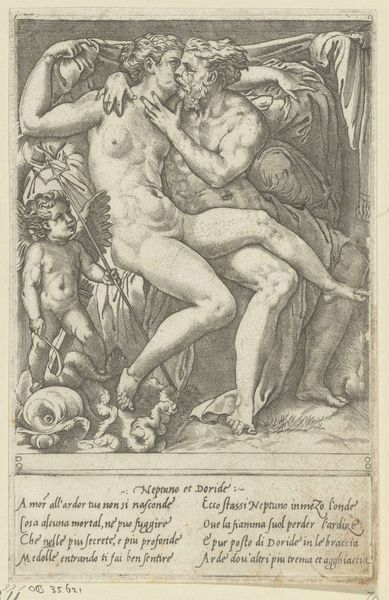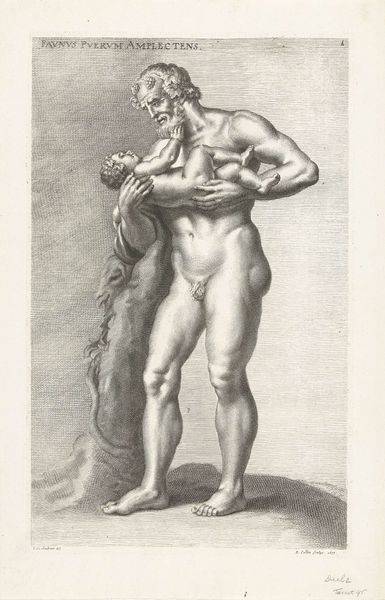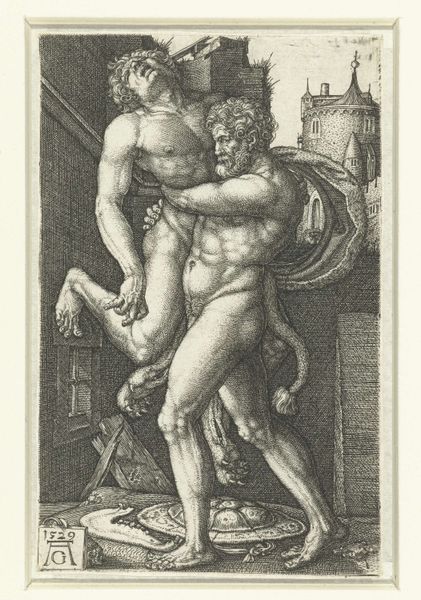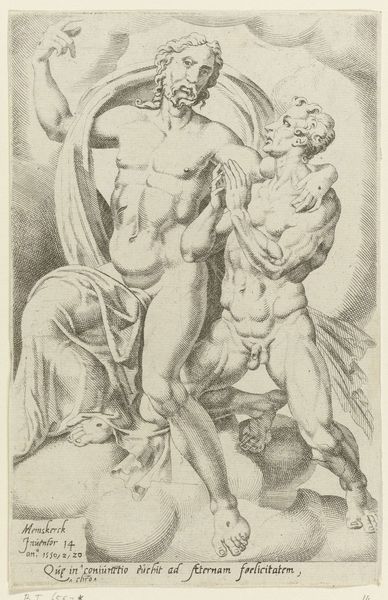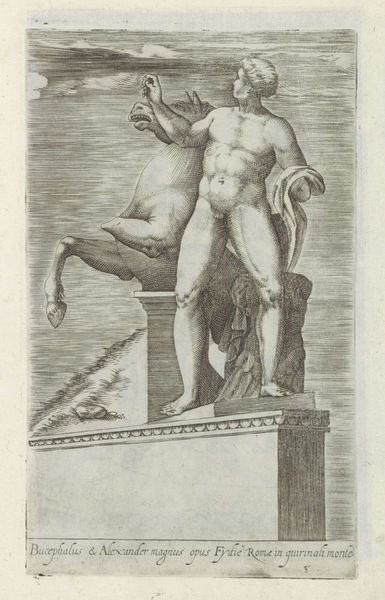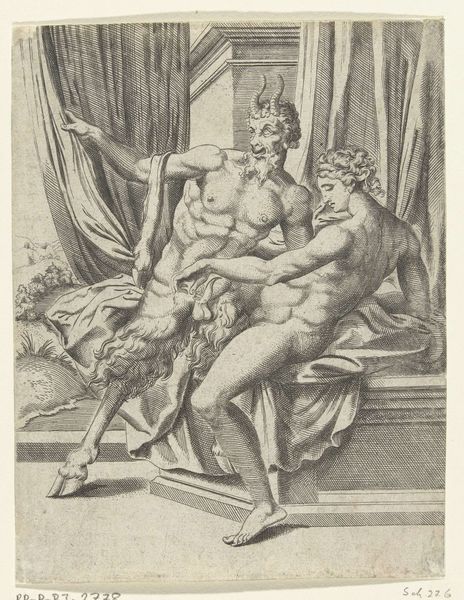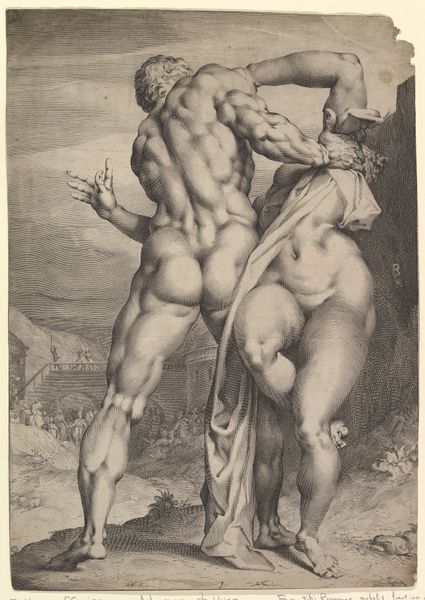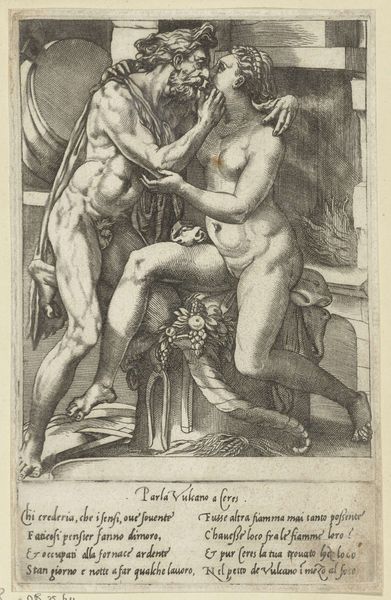
engraving
#
allegory
#
baroque
#
figuration
#
line
#
history-painting
#
nude
#
engraving
Dimensions: height 313 mm, width 207 mm
Copyright: Rijks Museum: Open Domain
Richard Collin's "Pan en Natura," etched in the 17th century, presents us with the god Pan holding a bounty of grapes, embraced by a figure representing Natura. The image of Pan, the rustic god of the wild, offering nature's bounty, speaks to an enduring cultural fascination. We find echoes of this theme in countless works across time—from ancient Dionysian feasts depicted on Greek pottery to the cornucopia symbols gracing Renaissance paintings. The grapes themselves, symbols of fertility and abundance, carry layers of meaning, linked to themes of revelry. Consider the grape: once a symbol of pagan ritual, it was adopted into Christian iconography, representing the blood of Christ. This transmission and transformation speaks to the complex, often subconscious, ways in which cultures adapt and reinterpret symbols. The powerful emotions evoked by this image—fertility, abundance, the wildness of nature—engage us on a primal level. Thus, "Pan en Natura" is not merely a depiction, but a node in a vast network of cultural memory—a testament to how symbols evolve, resurface, and take on new life across centuries.
Comments
No comments
Be the first to comment and join the conversation on the ultimate creative platform.
